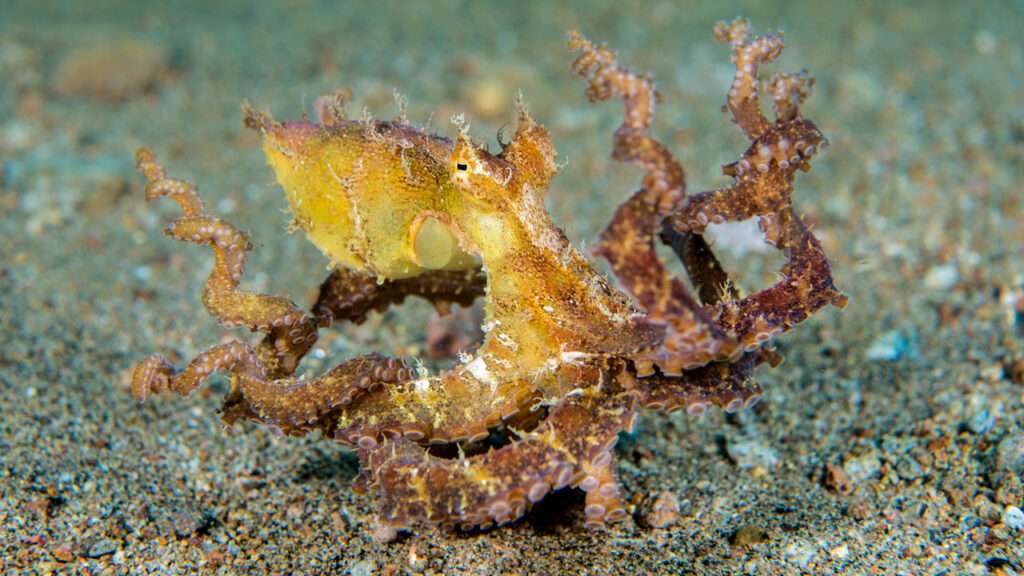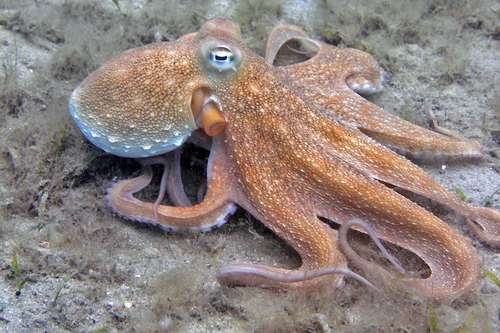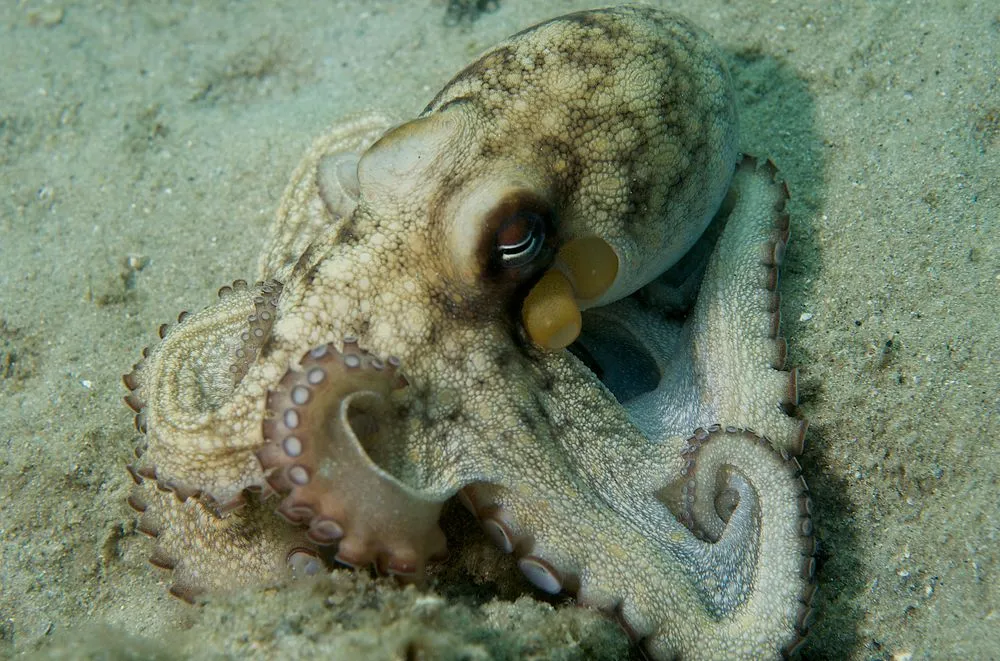
Description:
Scientific Name: Abdopus aculeatus
Lifespan: 1-5 years
Small octopus Abdopus aculeatus belongs to the order Octopoda. Due to its normal resting camouflage, which resembles a gastropod shell covered in algae, A. aculeatus is also known as the “algae octopus.” It is skilled at replicating its surroundings.
Because it inhabits beaches and moves between tidal pools in search of crabs, Aculeatus has been referred to as “the only land octopus.” When necessary, many octopi can move quickly across land, but none of them do so on a regular basis.
Habitat:
Along the shores of Indonesia, the Philippines, and northern Australia, the algae octopus can be found in all intertidal zones. They usually reside in sea grass-covered locations and make their homes in dens dug into the sandy seafloor that they carpet with tiny pebbles.

Behavior:
The daytime is when algae octopuses are most active, foraging outside of their dens and coming back at night. Algae octopus foragers will occasionally forage among coral, primarily in northern Australia. By scrounging and nibbling on algae cluster and small rocks, as well as burrowing into the sand, they typically mainly feed small crustaceans like calappid and portunid crabs. They will jet, which is the action of propelling water out of their syphon in order to drive their body forward, head first, in pursuit of their prey.
Keeping as a Pet/ In Captivity
Algae octopuses are the best choice if you are thinking of getting one as a pet. You do not need a vast tank to keep one because it is rather modest in size. Any tank with a 50-gallon capacity will do. If you want your small companion to feel comfortable, the water should be at least 78°F warm.
In addition to its larger tank, an algae octopus has the benefit of being more active throughout the day than most other species. Because of this, you won’t have to remain up all night to appreciate its lovely camouflages. In addition, the Algae Octopus is a very sociable creature. For the best camouflage benefits, make sure you replenish your tank with the appropriate plant life.
By scrounging and nibbling on algae cluster and small rocks, as well as burrowing into the sand, they typically mainly feed small crustaceans like calappid and portunid crabs.
Table





